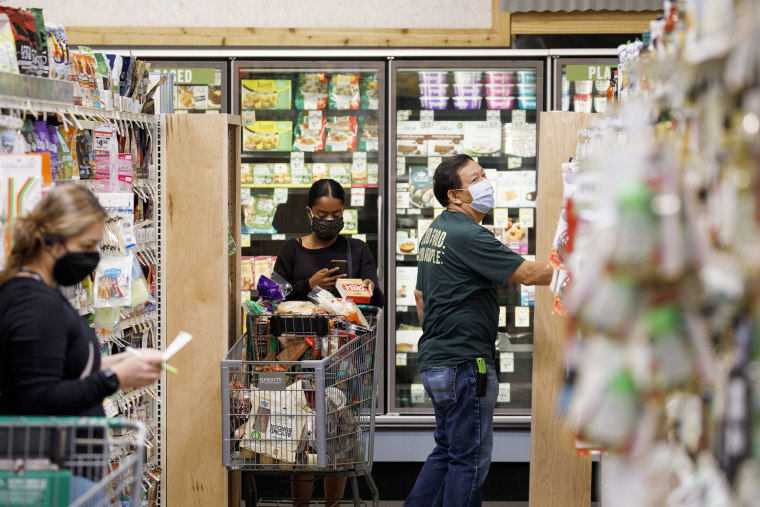August was the second most expensive month for groceries this year, just slightly behind May’s peak pricing, according to exclusive Nielsen data.
During the initial lockdown period when consumers stocked up for expected weeks of quarantine, they depleted shelves, and supermarkets and manufacturers struggled to keep up with demand.
But now, with long lines gone and essentials such as soap and toilet paper readily available, consumers may be surprised to find they are still paying lingering high prices.
The national average for a basket of 37 representative goods peaked at $138.78 in May, then fell in June and July to $136.40. In August it shot back up to $138.63.
While some individual items are less expensive than in May, they’re still up from January, particularly meat. A pound of bacon costs 50 cents more; ground beef, 40 cents; and chicken breast, 30 cents.
The hikes are more acute in certain pockets. Miami is paying a dollar more for chicken, a nearly 30 percent increase; while Los Angeles is paying 60 cents more, a 20 percent increase.
“Promotions offered to consumers continue to be suppressed below their pre-COVID-19 levels for the fifth straight month," Phil Tedesco, director of retail analytics for Nielsen, told NBC News. "August saw a dip in this crucial metric from July, which is what has caused this month to be more expensive than in recent months."
Usually about one-third of items sold in a grocery store are offered with some kind of price reduction or promotion, but in August only 26 percent were, down a half point from July.
“This means deals and offers to shoppers are less available, driving up the cost of the same basket of groceries,” Tedesco said.
Food makers say the disappearance of deals is all just basic economics working themselves out.
“Volume is up significantly, so manufacturers/brands haven’t had to use promos to hit volume targets,” tweeted John Vermylen, vice president of operations at Banza, a pasta maker.
“So basically [it’s] a short-term supply constraint in terms of [supply and demand] curve, markets working normally,” he wrote. Vermylen declined a request for comment.
Academic discussions about the invisible hand of the market may ring hollow for families and communities grappling with the twin forces of historically high unemployment and the disappearance of federal unemployment benefits amid a weakening jobs recovery. Senate Democrats on Thursday blocked a “skinny” relief bill with a $300 weekly cap on federal unemployment benefits, as the stalemate over emergency fiscal aid continues.
Erik Hembre, Assistant Professor of Economics at the University of Illinois at Chicago, estimated that if food price increases remain over the course of the next year the average household will spend about $400 more on groceries. Less well-off households will spend $210 more, but it will hit their budgets harder.
“Recent increases in food prices during the pandemic affect lower income households more because they spend a greater share of their income on food at home,” Hembre said.

